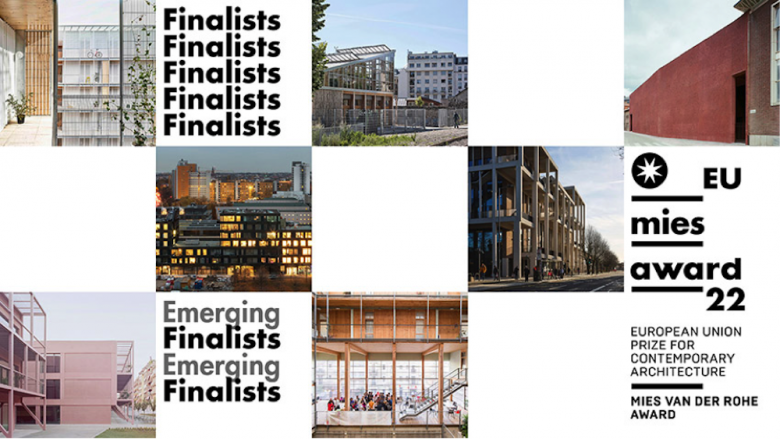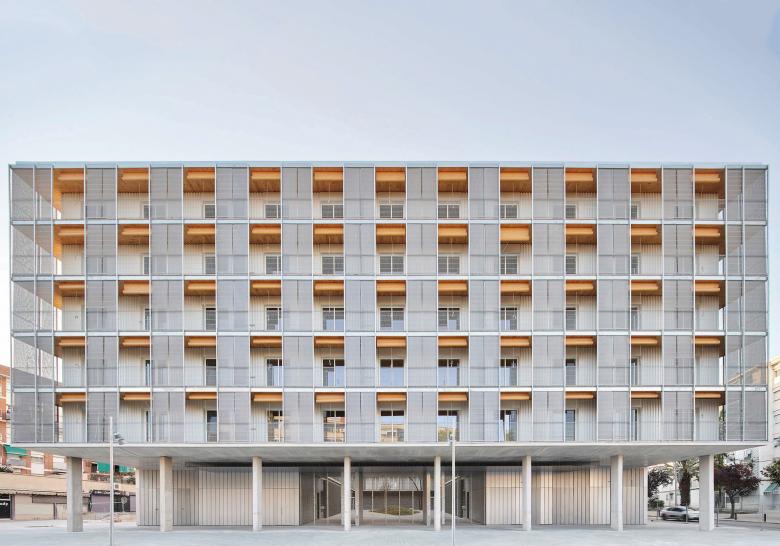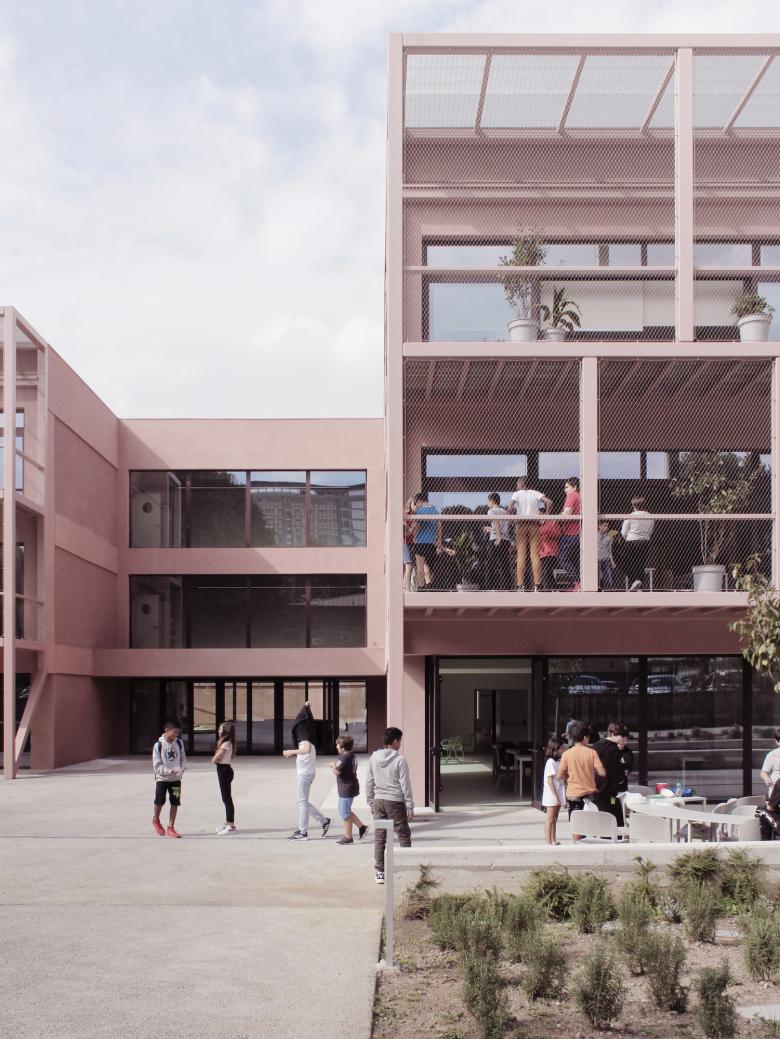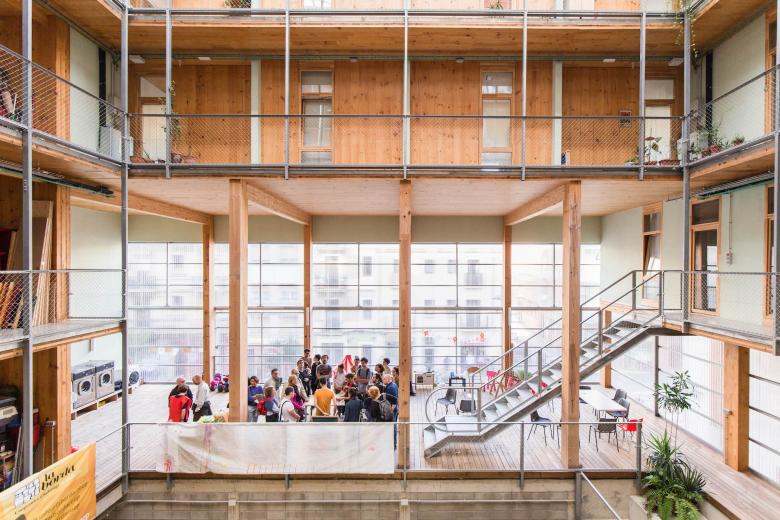Finalists Announced for EU Mies Award 2022
The European Commission and the Fundació Mies van der Rohe have announced the five works in the running for the 2022 European Union Prize for Contemporary Architecture – Mies van der Rohe Award, plus the two projects vying for the Emerging Architecture prize.
The two winners will be announced at the end of April after the jury (chair Tatiana Bilbao, Francesca Ferguson, Mia Hägg, Triin Ojari, Georg Pendl, Spiros Pengas, and Marcel Smets) visits each of the seven finalists: the five Architecture Finalists and the two Emerging Architect Finalists. The jury determined the finalists from the 40 shortlisted works announced last month that in turn were culled from the 532 nominated works in this pandemic-lengthened, three-year edition of the normally biennial prize.
The Architecture Finalists, listed and illustrated below, are found in five countries (Belgium, France, Germany, Spain, UK) and encompass five diverse programs: collective housing, mixed-use (cultural and social), social welfare, education, and culture. Most winners of the EU Mies Award, established in 1988, have been cultural, but the two most recent prizes have gone to collective housing projects that also double as transformations of existing buildings: Transformation of 530 Dwellings - Grand Parc Bordeaux in 2019 and DeFlat Kleiburg in 2017.
The two Emerging Architecture Finalists — a school in Italy and cooperative housing in Barcelona — are listed and illustrated at bottom. The jury found that all seven finalists "encourage and become models and references for local city policies. They tackle with new management models based on the community and circular sustainability processes. The works also focus on the productive and self sufficient city which is developed in a pedagogical way, dignifying the space that we inhabit and use."
Descriptions by the architects are found below, with links to the EU Mies Award website where more images and information on the finalists are available.
Architecture Finalists
85 Social Housing Units in Cornellà de Llobregat (ES) by peris+toral.arquitectes
"The bases of this new residential building are a matrix of communicating rooms that eliminates corridors to guarantee optimum use of the floor plan and the use of timber to enable the industrialization of elements, improved quality of construction and a major reduction of deadlines and C02 emissions."
Frizz23 in Berlin (DE) by Deadline (Britta Jürgens + Matthew Griffin)
"The architects adapted the Baugruppe model to create workspaces for arts, education and the creative industries and assumed the roles of developers to build the community of users for the project. 32 small companies and non profits threatened by Berlin’s rapid gentrification joined to secure their workspaces. The architects first assembled the group around their programatic goals, and then designed the building in continuous dialogue with the users, the neighborhood, and the city."
The Railway Farm in Paris (FR) by Grand Huit and Melanie Drevet Paysagiste
"Born from the desire of residents and local associations to see a place that combines urban agriculture and solidarity grow, the Ferme du Rail aims to integrate vulnerable people. The farm offers emergency social housing and social reintegration of 15 social reintegration housing units, 5 social student housing units, an unheated productive greenhouse, a restaurant open to the public, a mushroom-growing cave and a permaculture garden. Its objective is to minimize the need for energy, food and financial resources by implementing a circular economy."
Town House - Kingston University in London (UK) by Grafton Architects
"Inspired by the progressive educational vision presented in the brief, and the wish to connect with the community, we responded by arranging the program in a three dimensional matrix, one singular complex space which links the various elements of the brief, giving at the same time to each part its identity, a place where spaces and uses interlock, and connect physically or visually, creating an environment that encourages overlap and exchange."
Z33 House for Contemporary Art, Design and Architecture in Hasselt (BE) by Francesca Torzo
"Z33 settles in continuity with the existing buildings around the béguinage, echoing the dual character of their facades, enclosed towards the street and open with windows’ filigrees towards the garden. The exhibition rooms and the secret gardens compose a spatial labyrinth, amalgaming memories of local passages with ones of foreign villas or palaces."
Emerging Architecture Finalists
Enrico Fermi School in Turin (IT) by BDR bureau
"The project transforms a school of the 1960s in a semi-peripheral district of Turin, rethinking the architecture through the engagement of school communities in the definition of pedagogical guidelines, with the ambition to renovate both learning spaces and teaching methods. The existing building had a poor relation with outer spaces and a series of underused interior spaces. Part of the strategy to reverse this condition lies on the reorganization of accesses and external areas, opening the school to the city."
La Borda - Cooperative Housing in Barcelona (ES) by Lacol
"La Borda cooperative housing is a self-organized development to access decent, non- speculative housing. The cooperative prioritized making a building with minimal environmental impact, both in its construction and its lifetime. Another basic objective is to eliminate the possibility of energy poverty among its users, which some of them suffered due to the high cost of energy. The initial strategy of the project to reduce energy demand has been the optimization of the program, renouncing the underground car parking, grouping services and reducing the surface of the houses."







